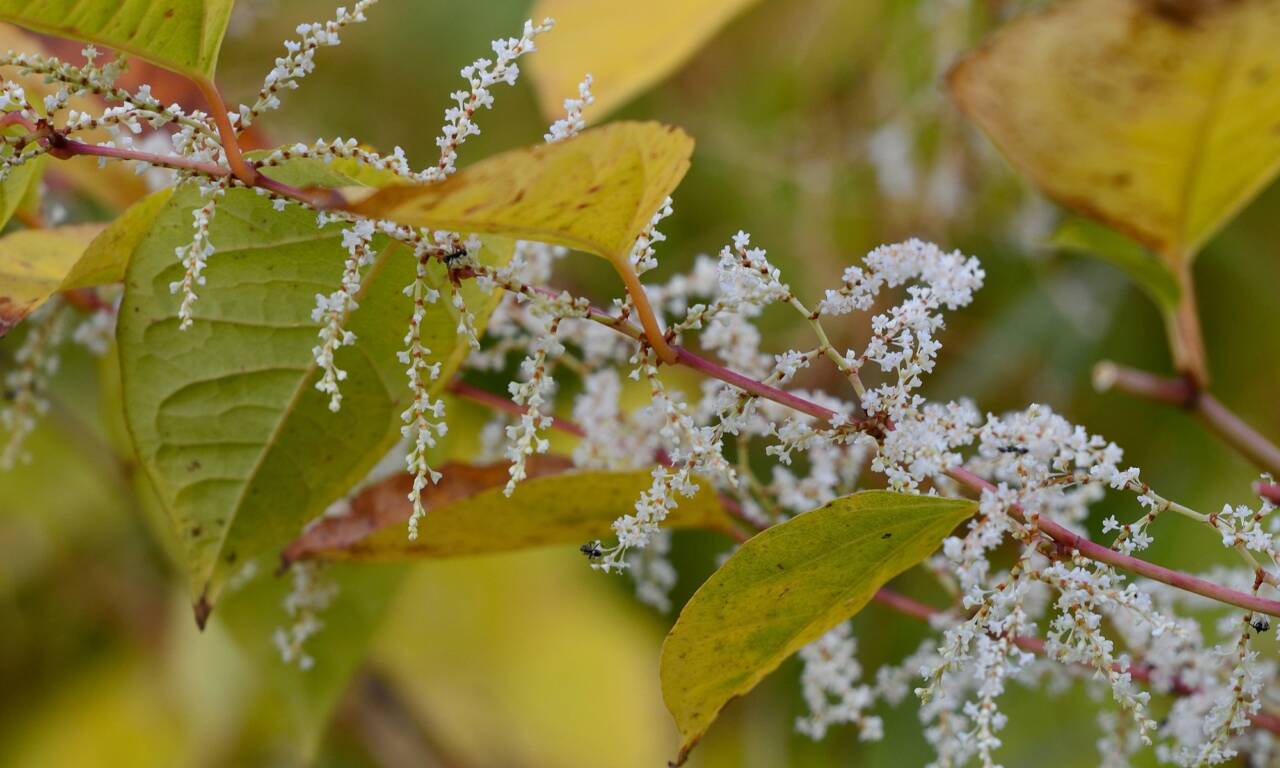Don't let Japanese Knotweed run riot in your garden

Since first being introduced in the 1800s, Japanese knotweed has become one of the UK’s most significant horticultural pests. The beautiful but rapidly spreading weed is not to be underestimated.
Japanese knotweed can be troublesome, time consuming and expensive to remove, making it an important consideration when buying or selling a home.
What is Japanese Knotweed and how can I identify?
Japanese Knotweed is one of several invasive plants that can cause problems to your property. It flourishes in the summer months when its distinctive white flowers blossom but dies back to ground level in the winter, making it tricky to identify.
This weed can grow up to 10cm a day and can sprout from fragments only millimeters small. It is imperative you can spot the sign of this invasive species early to prevent its creping roots taking over your garden.
What to look for:
- Large clump-forming plant, growing up to 3m tall
- Light green heart-shaped leaves approximately 10-15cm long.
- Hollow, bamboo-like, stems that are light green speckled with pink and red.
- Tiny flowers that are clustered together in creamy-white sprays, in bloom from August to October.
- Thick and extensive roots called rhizomes which are orangey-yellow in colour
What are the problems caused by Japanese knotweed?
If left untreated, Japanese Knotweed can spread rapidly and overwhelm your garden. Eradicating it once its established is a tricky process and one that can take years.
It’s incredibly invasive and can be a threat to natural ecosystems. Its dense and aggressive nature can suppress other flowers and shrubs and it can quickly wipe out native plants. The roots are so invasive they can grow through cracks in brickwork and paving which can cause major damage and even affect the foundations of a house.
Why should I care about it?
You can have Japanese knotweed growing on your property and unless required to do so under a Community Protection Notice, there is no requirement to take any action to deal with it. However, you must be cautious of allowing it to escape your garden and spreading into the wild or a neighbouring property as it is against the law to allow Japanese Knotweed to spread.
It is compulsory to declare the presence of Japanese Knotweed on a property so it can have a big impact when it comes to buying or selling a home. If prevalent enough it can affect the price of a property and possibly deter future buyers.
Get it out and keep it out
If Japanese Knotweed has been allowed to grow out of control, removing it can be a long process. The weed can either be dug out or sprayed with chemicals, but government advice is to consult an expert to take care of the problem for you to prevent further spreading.
Digging the plant out of the ground can be difficult if there is a large amount of Japanese Knotweed due to the depth of the roots. If even a fingernail sized amount is left behind the plant will almost certainly come back. Spraying Japanese Knotweed with herbicides can be effective but it’s a very slow process. It can take up to three or four seasons of spraying to totally eradicate the problem.
There are three simple measures to take to ensure it stays out of your garden:
- Check that any soil brought onto your property is guaranteed to be Japanese knotweed free
- Ensure that tools, machinery and other equipment brought onto your property is clean and free from fragments of rhizome
- Clean soil and plant debris from outdoor footwear and vehicles after being out and about